The Little Horn in the Bible symbolizes enigmatic prophecies and interpretations, stirring curiosity and debate among scholars and believers alike.
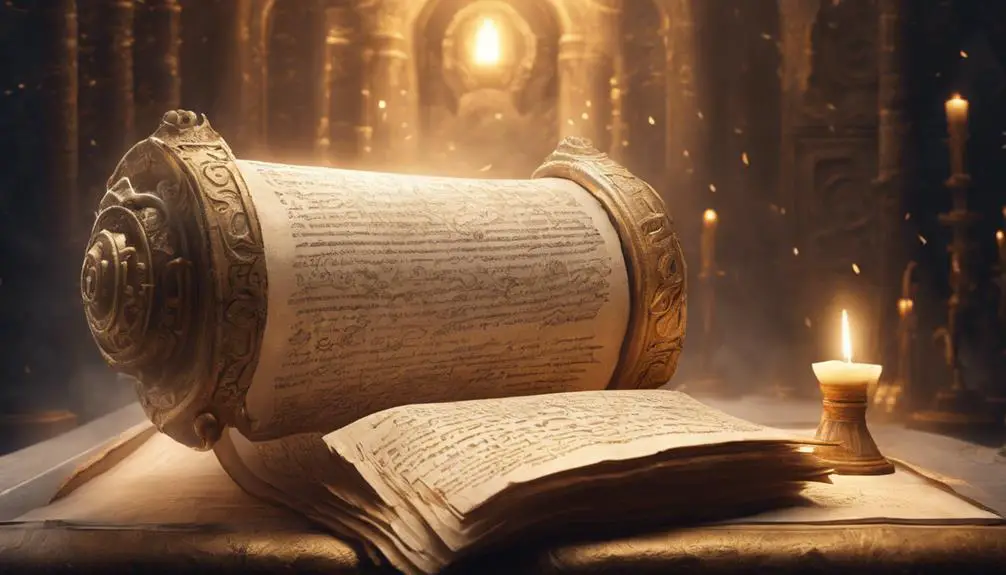
The Little Horn in the Bible
While you might initially think the concept of the 'Little Horn' in the Bible is too obscure or complex to grasp, it's actually a fascinating study that offers deep insights into biblical prophecy and history.
This symbol, found within the visions of Daniel and echoed in Revelation, has intrigued scholars and theologians for centuries. Its interpretations vary widely, from historical figures to end-time prophecies, making it a subject ripe with layers to uncover.
By exploring the origins, depictions, and various theories surrounding the Little Horn, you'll uncover a rich tapestry of biblical scholarship that connects ancient texts to modern interpretations, leaving you with much to ponder about this enigmatic figure.
Key Takeaways
- The Little Horn symbolizes emerging power and rebellion against divine authority in biblical prophecies of Daniel and Revelation.
- It represents both historical figures and the archetype of defiance, marked by blasphemous speech and actions.
- Interpretations of the Little Horn have evolved, reflecting threats to faith across different historical periods and theological perspectives.
- Understanding the Little Horn enriches theological discourse by connecting ancient texts with modern eschatological speculations and geopolitical implications.
Origins of the Little Horn

In exploring the origins of the Little Horn, one must delve into the rich tapestry of biblical prophecy and historical context to uncover its symbolic significance. This journey isn't just about tracing a phrase back through ancient texts; it's about understanding the milieu from which this symbol emerged. The Little Horn's roots are deeply embedded in the soil of cultural influences and historical context that shaped its narrative and interpretation.
You'll find that the historical context of the Little Horn is multifaceted, reflecting the tumultuous periods of history that the biblical authors lived through. These were times marked by conquests, exiles, and the clash of empires. Such events weren't just backdrop; they were actively shaping the beliefs, hopes, and fears of the people. The cultural influences of these times, including interactions with neighboring civilizations and their religions, played a crucial role in how symbols like the Little Horn were conceived and understood.
To grasp the origins of the Little Horn, you've got to peel back the layers of history and look at the interplay between the political dynamics of ancient Near Eastern empires and the theological reflections of the biblical writers. This endeavor requires a scholarly approach, one that considers archaeological findings, historical documents, and the biblical text itself.
Biblical Depictions and Symbols
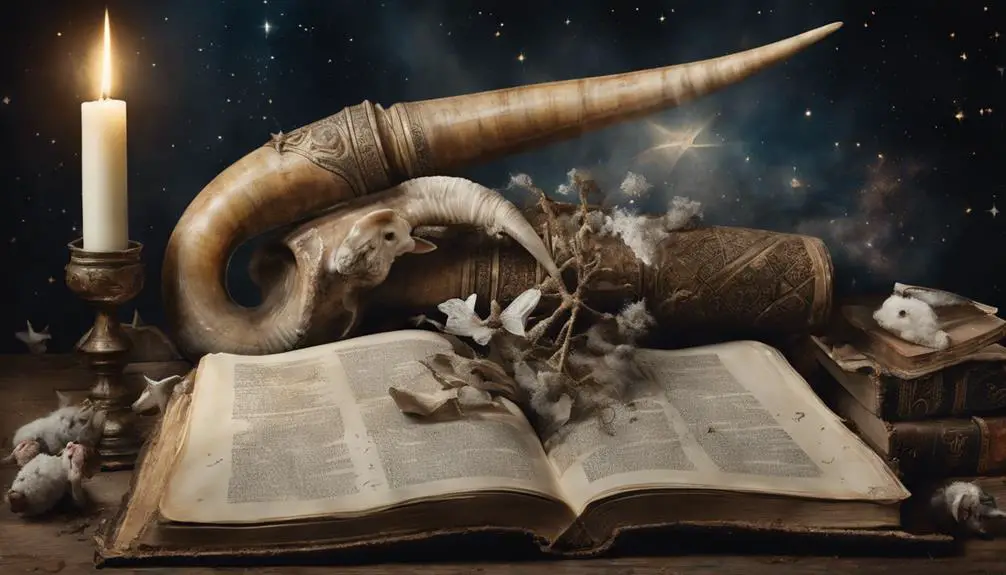
Having explored the historical and cultural origins of the Little Horn, it's essential to examine the symbol's portrayal and meaning within biblical texts. The biblical narrative employs animal symbolism and prophetic imagery to convey complex theological and eschatological themes. The Little Horn, as depicted in the Bible, serves as a potent symbol of opposition and corruption, challenging the divine order and the faithful.
In understanding the Little Horn's significance, consider these aspects of its biblical depiction:
- Prophetic Context: The Little Horn emerges within prophetic visions, specifically in the books of Daniel and Revelation, where it symbolizes emerging powers that stand in opposition to God's plan.
- Animal Symbolism: The use of animals to represent kingdoms and powers is prevalent in biblical prophecy, with the Little Horn being no exception. This symbolism draws from ancient Near Eastern cultures, where animals were often emblematic of strength, sovereignty, and divine protection.
- Duality of Representation: The Little Horn embodies both a specific historical figure and an enduring archetype of rebellion against God, showcasing the dual nature of biblical prophecy.
- Attributes and Actions: The Little Horn is described as having eyes like a man and a mouth speaking great things, highlighting its nature of intelligence, blasphemy, and deception.
- Contrast with the Divine: Its portrayal contrasts sharply with symbols of divine authority and righteousness, underscoring the conflict between divine and earthly powers.
Through these depictions, the biblical text uses the Little Horn to convey messages about power, corruption, and the ultimate sovereignty of the divine, framing its narrative within the broader context of prophetic imagery and animal symbolism.
Interpretations Throughout History
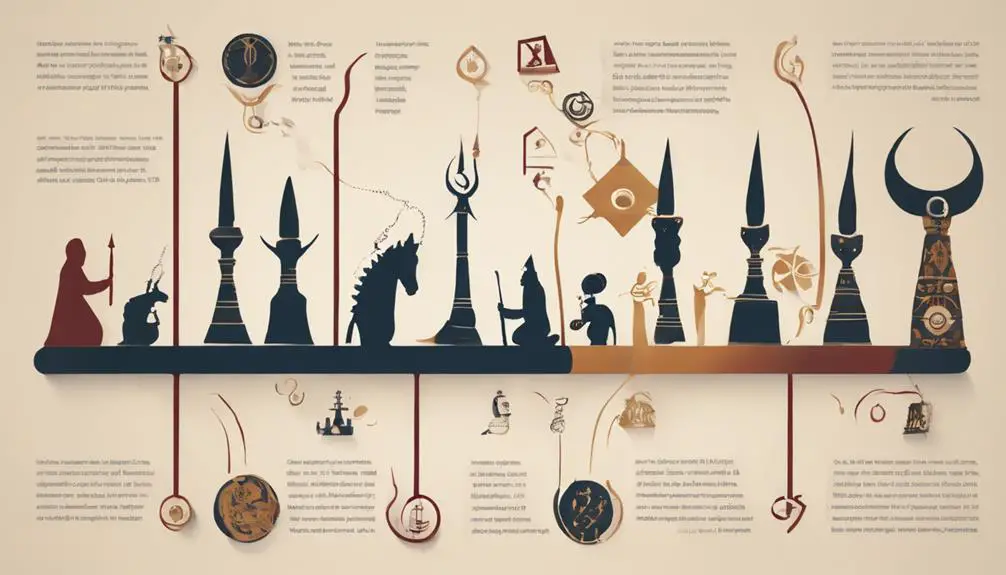
Throughout history, interpretations of the Little Horn have varied widely, reflecting shifts in theological perspectives and historical contexts. In early Christian interpretations, you'll find the Little Horn often represented emerging threats to the faith, depicted in sermons and texts as a symbol of heresy or paganism.
As you delve deeper into the Middle Ages, the narrative around the Little Horn shifts dramatically, influenced heavily by the socio-political climate of the time. You'd notice a stark transformation in artistic representations, where the Little Horn began to feature prominently in apocalyptic art, symbolizing the ultimate adversary of Christ and his church.
Moving forward into the Renaissance and Reformation periods, interpretations of the Little Horn took on a more direct political connotation. Scholars and theologians, embroiled in the turmoil of religious reform, often identified the Little Horn with contemporary political figures or entities perceived as threats to the purity of the faith. This period marks a significant amplification in the cultural impact of the Little Horn, as it became a tool for political and religious commentary, deeply embedded in the literature and art of the era.
In modern times, you're looking at a more diverse range of interpretations, reflecting the complexities of contemporary theological thought. The Little Horn's significance is no longer confined to a singular narrative but is interpreted through various lenses, including historical, prophetic, and symbolic. This evolution underscores the enduring relevance and flexibility of biblical symbols in adapting to new contexts, ensuring their continued impact on cultural and religious discourse.
The Little Horn in Daniel's Vision
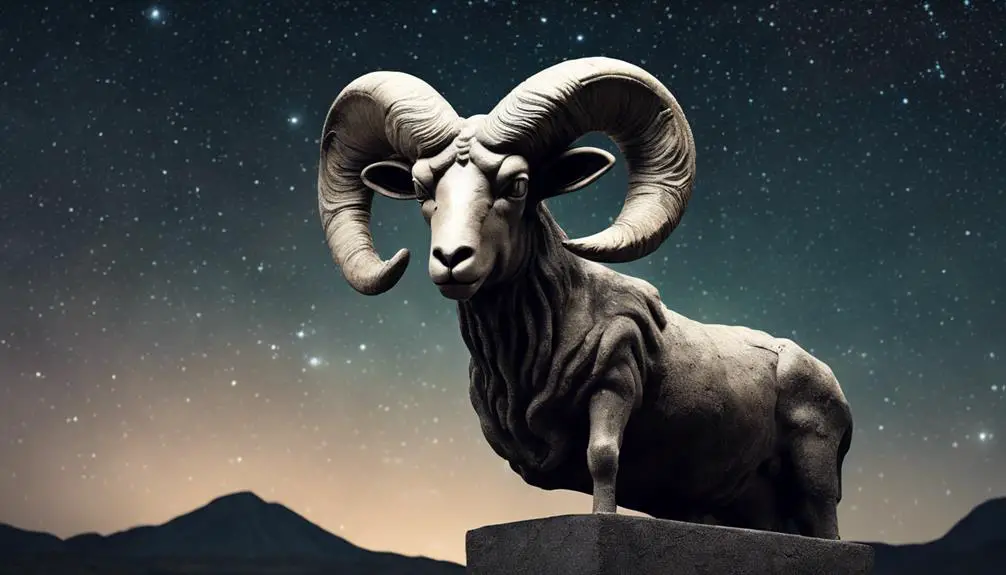
Exploring Daniel's vision, you'll encounter the Little Horn, a symbol rich in complexity and laden with prophetic significance, emerging as a central figure amidst the beasts representing empires. In the visionary context of Daniel's dream imagery, the Little Horn stands out not just for its mysterious nature but also for the depth of interpretation it has invited over centuries.
To understand its deeper meaning, consider these aspects:
- Origins: The Little Horn emerges among ten others, symbolizing a power arising from within established realms, yet distinct and more formidable.
- Characteristics: Unlike its counterparts, this horn possesses eyes like a man and a mouth speaking great things, suggesting intelligence, insight, and a capacity for persuasive, boastful speech.
- Actions: It's noted for uprooting three of the other horns, indicating a conquest or displacement of existing powers, hinting at political or spiritual upheaval.
- Dominion: This horn's reign is marked by persecution and attempts to change 'times and laws,' indicating an authority that challenges divine ordinances and persecutes the saints.
- Judgment: Ultimately, the Little Horn's dominion is temporary, with a divine judgment leading to its downfall, emphasizing the transient nature of earthly power in contrast to the eternal.
In dissecting the dream imagery and visionary context of Daniel's account, you're delving into a narrative that transcends a mere historical or future prediction. It's a profound exploration of power, divine sovereignty, and the inevitable downfall of those who oppose the divine order. The Little Horn, thus, serves as a compelling study in the ambit of biblical prophecy, inviting reflection on themes of pride, persecution, and providence.
Connections to Revelation's Prophecies
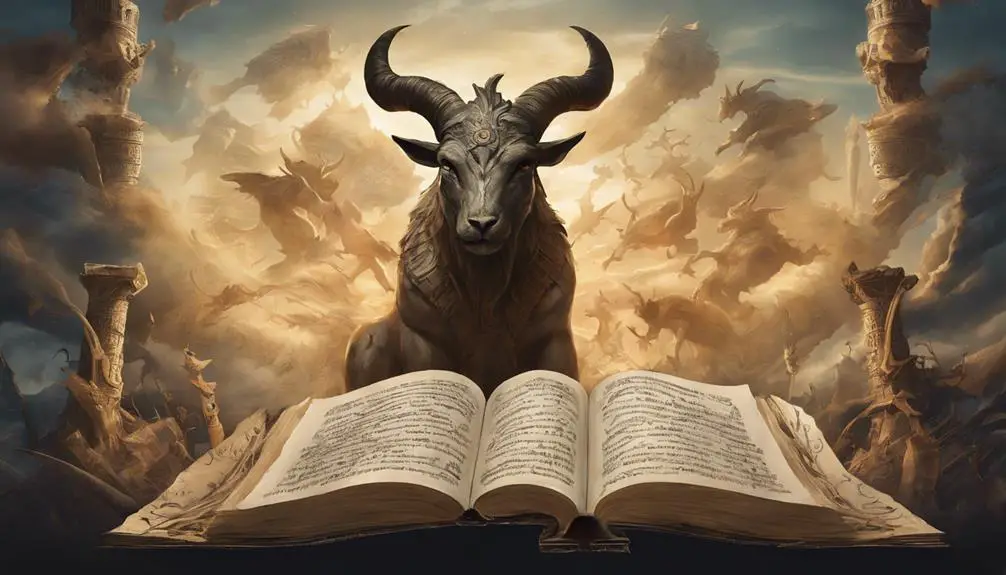
Building on our understanding of the Little Horn in Daniel's vision, let's examine its intriguing parallels with the figures described in the Book of Revelation. This connection is pivotal to unraveling end time theories that are steeped in apocalyptic imagery.
The Little Horn, symbolizing a formidable power emerging among others and speaking against the Most High, mirrors the Beast of Revelation, particularly in its blasphemous actions and authority over nations for a prophesied period. Both entities are described with pompous words and actions against God, highlighting a thematic continuity between Daniel and Revelation. This parallel extends further into their roles within end time scenarios, where they epitomize opposition against divine authority, thereby playing central roles in the unfolding of apocalyptic events.
Furthermore, the mention of a time, times, and half a time in Daniel regarding the Little Horn's period of dominion closely aligns with the forty-two months mentioned in Revelation 13, where the Beast is granted power to act. This temporal parallelism not only strengthens the link between these apocalyptic figures but also underscores a prophetic consistency concerning the duration of their influence.
The analytical exploration of these connections reveals a complex intertextuality between Daniel and Revelation, enriching our comprehension of biblical prophecies. This analysis doesn't just deepen our understanding of individual texts but also frames a comprehensive narrative on eschatological themes, where symbols like the Little Horn and the Beast become central to decoding the mysteries of the end times.
Modern Perspectives and Theories

In recent years, scholars have delved into how the Little Horn's depiction in biblical prophecy aligns with contemporary interpretations and theories, shedding new light on its significance for modern believers. This exploration hasn't only enriched theological discourse but also connected ancient texts with current eschatological speculations and geopolitical implications.
Modern perspectives on the Little Horn often revolve around:
- Historical and Political Context: Scholars emphasize the importance of understanding the historical and political milieu of the biblical era to grasp the symbolism of the Little Horn, suggesting it may have represented specific historical figures or entities at the time of writing.
- Eschatological Speculations: There's a growing interest in how the Little Horn fits into end-times prophecies. Some view it as a symbol of future adversarial forces against divine plans, often tying it to contemporary geopolitical conflicts or trends.
- Theological Implications: The discussion extends to the theological significance of the Little Horn, analyzing its role in divine judgment and redemption narratives, and what it conveys about the nature of evil and divine sovereignty.
- Symbolic Interpretations: Increasing attention is given to symbolic or allegorical interpretations, where the Little Horn represents broader concepts such as institutional corruption, moral decay, or spiritual apostasy.
- Comparative Religion Perspective: Scholars compare the depiction of the Little Horn with similar figures in other religious texts, exploring common themes in apocalyptic literature and their implications for interfaith dialogue.
These modern perspectives enrich the understanding of the Little Horn, bridging ancient prophecy with contemporary religious thought and global concerns, thus offering a deeper meaning for today's audience.
Frequently Asked Questions
How Has the Concept of the Little Horn Influenced Modern Literature and Popular Culture, Outside of Religious Texts and Interpretations?
You've likely noticed how modern adaptations and political allegories in literature and pop culture often draw on symbolic elements without directly referencing their origins.
The concept of the 'little horn,' for example, has subtly influenced narratives, symbolizing corrupt power and moral decay. This imagery enriches stories, providing depth and a critical lens on society.
Through these adaptations, the essence of the 'little horn' continues to shape our understanding of leadership and ethics in a contemporary context.
Are There Any Notable Artworks or Musical Compositions Inspired by the Imagery or Story of the Little Horn, and What Are Their Significances?
You're diving into a time machine, exploring how artistic interpretations and musical motifs have drawn inspiration from an ancient narrative, albeit without its religious tag.
These artworks and compositions, echoing the imagery or story, aren't just visual or auditory delights; they're significant cultural artifacts.
They dissect and reassemble the narrative, offering new perspectives and understanding.
This journey reveals the enduring influence of narratives on art and music, showcasing creativity's power to transcend origins.
How Have Different Religious Denominations Outside of Mainstream Christianity Interpreted or Incorporated the Concept of the Little Horn Into Their Beliefs or Teachings?
You're exploring how various religious denominations outside mainstream Christianity have woven the concept of the little horn into their doctrines. These groups often delve into horn symbolism and esoteric interpretations, seeking deeper, sometimes mystical meanings.
This engagement showcases a diverse theological landscape where the little horn isn't just a biblical figure but a complex symbol interpreted across a spectrum of beliefs, reflecting a rich tapestry of spiritual insight and doctrinal variation.
Can Parallels or Similarities Be Drawn Between the Little Horn and Figures or Symbols From Other Ancient Mythologies or Religions Around the World?
Yes, you can find parallels between mythological archetypes and symbols from various ancient mythologies around the world.
By diving into comparative symbolism, you'll uncover that many cultures have figures or symbols resembling the traits or narratives associated with the 'Little Horn.'
This analytical exploration reveals a shared human propensity to embody similar themes in their religious or mythological storytelling, showcasing a fascinating intersection of beliefs across different civilizations.
What Psychological or Sociological Explanations Have Scholars Proposed for the Enduring Fascination With and Fear of the Little Horn Figure Throughout History?
You're exploring why certain symbols, like the one you're curious about, persist in evoking fear and fascination.
Scholars suggest these reactions stem from archetypal fears deeply embedded in the human psyche. This symbol, acting as a symbolic representation, taps into universal anxieties about power, corruption, and the unknown.
This analysis dives into how such symbols resonate across cultures and time, reflecting shared psychological and sociological underpinnings that explain their lasting impact.
Conclusion
As you've journeyed through the enigmatic imagery of the Bible, the little horn stands as a testament to the complexity of prophetic symbols. Its origins, depictions, and interpretations have evolved, leaving scholars and theologians in a constant state of analysis.
Daniel's vision and its connections to Revelation's prophecies hint at a deeper, perhaps yet unrevealed truth. As you ponder modern perspectives, consider this: the little horn's full significance might still be unfolding, challenging us to watch, wait, and wonder what revelations tomorrow may bring.

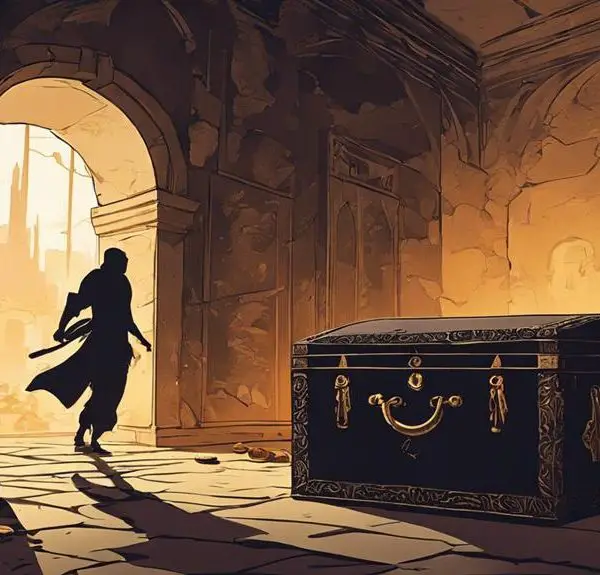
Sign up